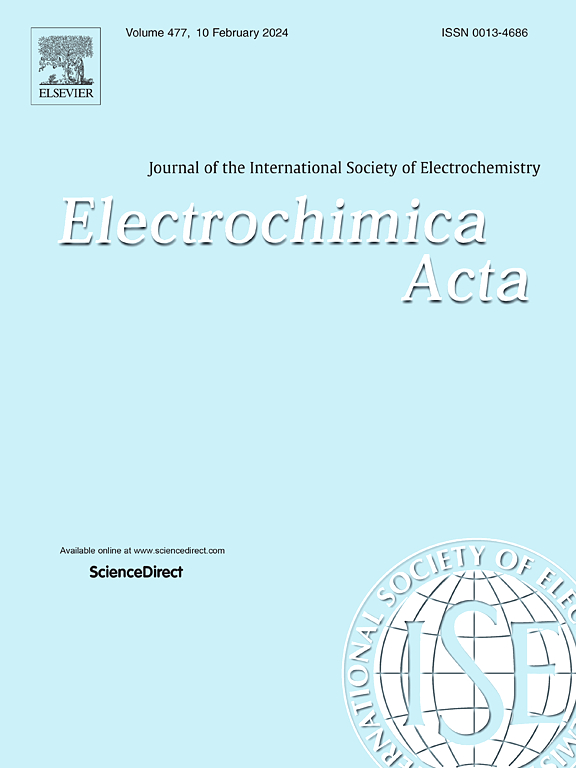An operando investigation of temperature distribution behaviour in full-cell vanadium-redox flow batteries
IF 5.6
3区 材料科学
Q1 ELECTROCHEMISTRY
引用次数: 0
Abstract
This study analyzes the real-time temperature distribution patterns on the anode (negative electrode) and cathode (positive electrode) of the vanadium redox flow battery in a full-cell configuration. The patterns are analyzed under various current densities (60, 75, and 90 mA cm–2), electrolyte flow rates (50 and 100 mL min–1), and different operating temperatures of the cell and tanks (25 °C and 30 °C) during the galvanostatic cycling. The real-time temperature variations are recorded at the negative and positive electrodes during the charge-discharge cycling and then represented in 2D temperature distribution contours. It is noted that the temperature of the negative electrode increases during charging and falls during discharge. Conversely, the temperature of the positive electrode decreases during charging and increases during discharging. A comprehensive analysis and discussion of the temperature distribution at the electrodes are presented. Furthermore, the distribution of applied current density during the galvanostatic cycling at both electrodes is carefully mapped. The study offers valuable insights into the temperature distribution behavior of vanadium redox flow batteries, which could be advantageous for future technological advancements. Specifically, catholyte species precipitate during galvanostatic cycling at moderate temperatures, a problem for vanadium redox flow batteries.
全电池钒-氧化还原液流电池温度分布特性的操作研究
本研究分析了全电池结构下钒氧化还原液流电池阳极(负极)和阴极(正极)的实时温度分布模式。在不同电流密度(60、75和90 mA cm-2)、电解质流速(50和100 mL min-1)以及电池和槽的不同工作温度(25°C和30°C)下,分析了恒流循环过程中的模式。在充放电循环过程中,记录负极和正极的实时温度变化,然后用二维温度分布曲线表示。值得注意的是,负极的温度在充电时升高,在放电时下降。相反,正极的温度在充电时降低,在放电时升高。对电极处的温度分布进行了全面的分析和讨论。此外,在两个电极的恒流循环过程中,施加电流密度的分布被仔细地绘制出来。该研究为钒氧化还原液流电池的温度分布行为提供了有价值的见解,这可能有利于未来的技术进步。具体来说,在中等温度的恒流循环过程中,阴极电解质会沉淀,这是钒氧化还原液流电池的一个问题。
本文章由计算机程序翻译,如有差异,请以英文原文为准。
求助全文
约1分钟内获得全文
求助全文
来源期刊

Electrochimica Acta
工程技术-电化学
CiteScore
11.30
自引率
6.10%
发文量
1634
审稿时长
41 days
期刊介绍:
Electrochimica Acta is an international journal. It is intended for the publication of both original work and reviews in the field of electrochemistry. Electrochemistry should be interpreted to mean any of the research fields covered by the Divisions of the International Society of Electrochemistry listed below, as well as emerging scientific domains covered by ISE New Topics Committee.
 求助内容:
求助内容: 应助结果提醒方式:
应助结果提醒方式:


